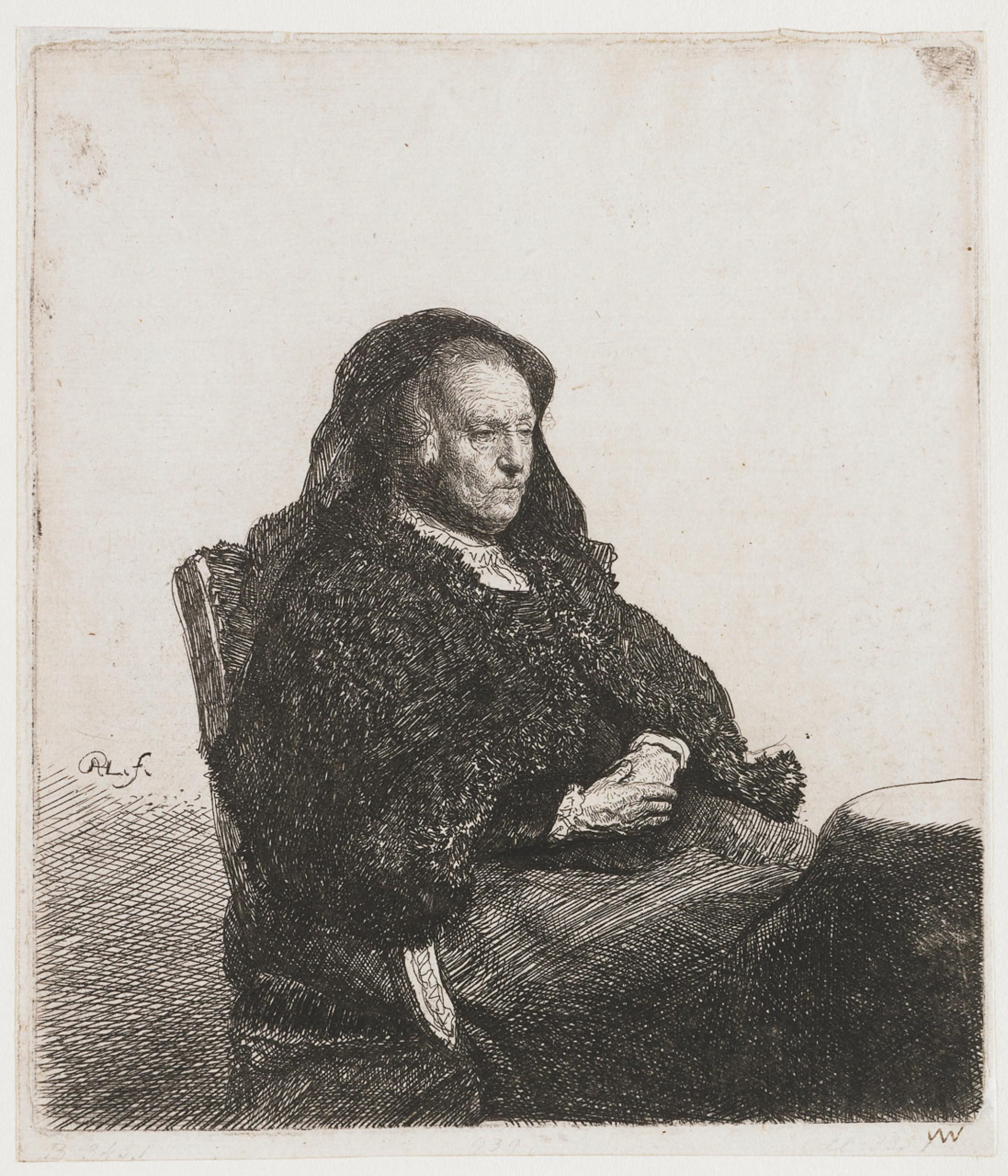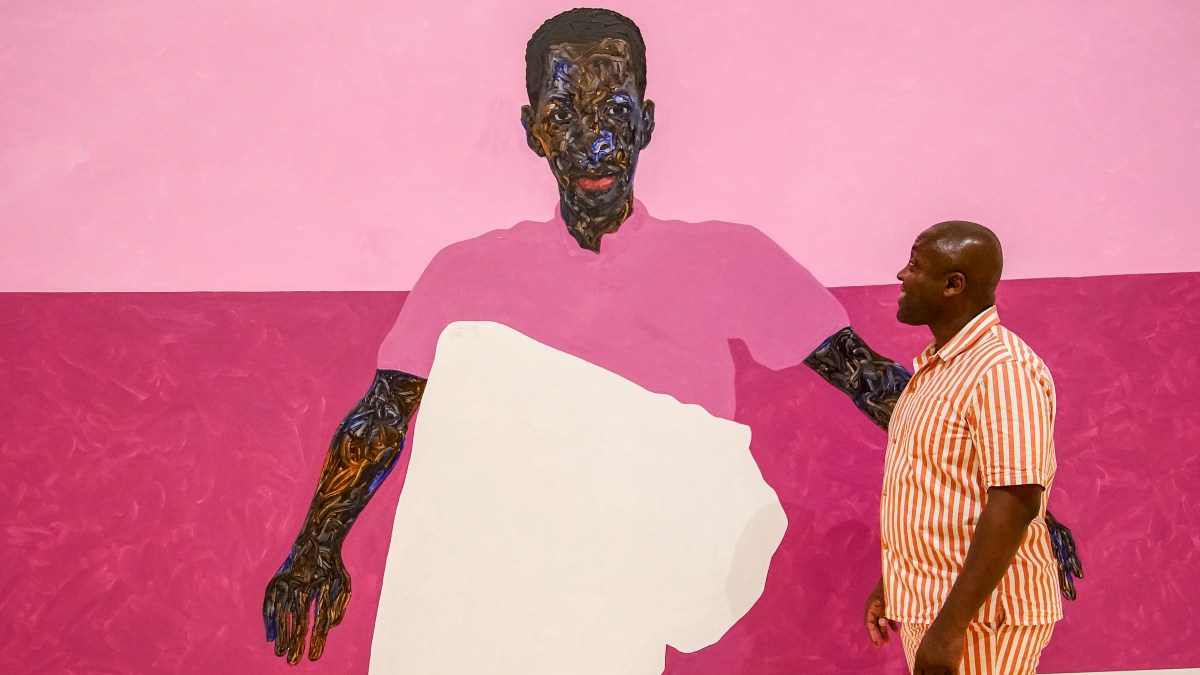One hundred heads in the room at Christie’s auction house turn to a woman with red hair. She has just flung her arm out to stop the auctioneer, who was seconds away from selling a drawing by Rembrandt van Rijn for £40,000.
There are gasps and murmurs from the crowd. The auctioneer leans over the white plinth he stands behind, spectacles slipping, gavel frozen midair. The other bidder, a dark-haired woman with red lipstick and a pink velvet blazer, whispers vigorously into her phone. The two are locked in a bidding war over a 400-year-old sketch of the artist’s mother.
Seconds pass. “Do we have one more bid?” the auctioneer asks, eyes glittering. “You might not get another chance.”
The red-haired lady talks rapidly into her phone, listening intently to the instructions from her client on the other end. She pauses: “I’m out.”
Cries of shock explode across the room. The auctioneer nods and raises his gavel.
“It’s going,” he says, arms outstretched like a conductor commanding an orchestra. “Last chance,” he scans the room for any other late bidders. “And sold.”

Rembrandt’s drawing of his mother went for £40,000
ALAMY
On a chilly December evening, dozens of collectors have come to Christie’s, on King Street in central London, where a collection of 75 Rembrandt works are being sold for tens of thousands of pounds apiece. Hundreds more people are live streaming the event, bidding online from China, the Netherlands, Australia and America.
Collecting art isn’t just about finding something pretty to hang in the hallway — it’s an investment.
• From helium to graphene: My 2023 Cowie clangers
Ultra-high-net-worth individuals held a total $2.17 trillion (about £1.7 trillion) worth of art and collectables in 2022, according to the consultancy Deloitte and the market researcher ArtTactic. This is predicted to grow to $2.86 trillion by 2026.
While investing in alternative assets such as art comes with risks, there are gains to be made if you choose the right pieces. The estate agency Knight Frank, which compiles an annual report on luxury investments, estimates that investors made an average return of 30 per cent in the 12 months to the end of June from the asset class. This compares with an average gain of 10 per cent on watches and jewellery and 8 per cent on rare coins, it said.
Keep it affordable
Investing in art means buying works that you believe will increase in value.
The safest ways to buy art are from auction houses, reputable dealers and art galleries. If you are buying from a dealer, you can use the not-for-profit organisation the Independent Fine Print Dealers Association’s website (ifpda.org) to check if they are a member (this indicates that they are a reputable source to buy from).
Be aware that there could be a large mark-up in price when buying from a dealer, so compare what works from the same artist — or similar artists — cost elsewhere.
You can hire an art consultant to help you, but it’s important to do your own research as well. Go to museums, art fairs and auction houses where you can speak to specialists and increase your knowledge about what a fair price to pay for the art you like is.
The Severed Head of Medusa by Damien Hirst sold for £567,000
ALAMY
So-called blue-chip art by established artists such as Pablo Picasso and Andy Warhol may be a safe bet, but it’s an expensive one. Red-chip art, which is made by emerging artists such as Sahara Longe and Amoako Boafo, can be less expensive because the names do not yet hold such prestige. If you buy the work of a newer artist who goes on to become a household name then the value of your piece could skyrocket, but there are no guarantees.
John Russo from the Maddox Gallery in London said: “You never know if someone who is popular now will truly be popular in five or ten years. But that risk potentially leads to a greater reward. I can tell you about countless people who bought a Banksy for £7,000, and now those works are worth six figures. Part of it is down to a little bit of luck, part of that is because they loved the work.”
If you are just starting out, consider buying smaller pieces. While Picasso’s Les femmes d’Alger (Version O) sold in 2015 for $179.4 million, it is possible to buy a smaller print by the artist for as little as £1,000, said Tim Schmelcher from Christie’s.
Whatever your budget, there are ways to invest wisely, Schmelcher said. “Buy as little as possible and the best you can. If you have £20,000 a year to spend on art, buy one piece for £20,000 once a year, not multiple cheaper pieces,” he said.
The quality of a piece is important and it should have good provenance from a respectable source. Be sure to do your research, particularly if you’re buying works from newer artists. Checking social media can tell you whether the artist has a significant following, while experts at galleries and auction houses can explain why a piece has been valued at a particular price.
There are a number of ways to spot an undiscovered artist who is more likely to stand the test of time. “Speak to someone who can tell you if the work is created well,” Russo said. “As with any investment, you can get a sense of how it might perform by asking questions.”
Once you have bought a piece, it’s important to keep any official documentation such as an invoice and receipt. Proof of purchase will be crucial if you sell the work.
Fakes have been so convincing that they have fooled hundreds of experts. Between 1986 and 1994 the British con artist John Myatt faked as many as 200 pieces by famous artists, fooling experts at the Tate, Sotheby’s and Christie’s.
Buy what you like
Investing in alternative assets such as art is notoriously unpredictable compared with, say, putting your money in the stock market. Because of this, experts say that you should buy pieces that you personally like rather than just choosing them because you hope the price will go up. You should also view art as a long-term investment — not something to make a fast buck.
Store your new treasure at appropriate levels of heat, light and humidity – and check your insurance
ALAMY
The Fine Art Top 100 index, created by the art website ArtNet, tracks the value of a portfolio of the world’s 100 top-selling artists including Jean Dubuffet and Henri Matisse based on their auction revenue over five years. It gained an average of 5.8 per cent a year over the past 20 years, and 1.3 per cent a year over ten. The index is down 7.3 per cent over the past 12 months.
In comparison, the S&P 500 index of big American companies gained 7.6 per cent a year over 20 years, and 10.4 per cent a year over the past decade. It is up 21.2 per cent over the past 12 months.
“Accept that investing in art, like any investment, comes with risk,” Sophie Clauwaert, an art adviser from the private bank Puilaetco, said. “All investors should keep in mind that past valuations and performance are no indication of future valuations and performance.
“Changes in exchange rates may also cause the value of underlying investments to go up or down too.”
There are other costs to consider if you invest in art. You should have a specialist insurance policy, Matthew Ashton from the insurance broker Stanhope said, as any valuable works are unlikely to be covered by standard home insurance cover.
A 60-year-old living in Surrey with a collection worth between £5,000 and £20,000 could expect to pay £109 a year for insurance, according to Stanhope. For a £50,000 collection cover would cost about £168 a year, and £336 for a £100,000 collection.
Keep your pieces away from direct sunlight and heat, which can cause damage. According to Art UK, light levels should not exceed 50-80 lux for paper artwork, or 150-200 lux for oil paintings (you can measure this using a light meter, which can be bought online for about £20). Be careful of conditions that are too damp or too dry as well — keep the room’s humidity at about 40-60 per cent relative humidity. You can measure this using a hygrometer, which can be bought online for about £10.
Snapping up a Rembrandt
Back at Christie’s, the gavel comes down as an illustration of Adam and Eve sells for £180,000 and a Rembrandt self-portrait goes for £160,000.
Rudy Benayoun, 32, an investment manager, wants to start collecting art and is here today to do his research. “I’m sussing it all out,” he said. “It’s interesting to see how art gets its price tag. It can be a good return but it’s a risky space.”
Laurence King, 68, has £25,000 to spend tonight. “I sold my art publishing company and have a bit of money spare, so I entertain myself by buying bits and pieces,” he said. “It is astonishing that I could have something that Rembrandt touched, who is an artist I really admire.
“I don’t see art as an investment or care about the investment value. It’s all for pleasure.”

